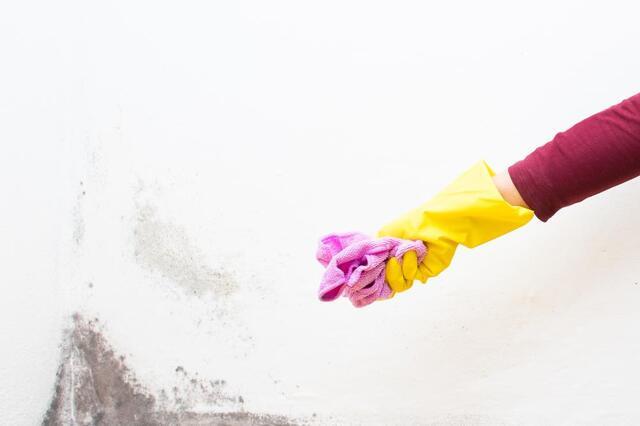In the Battle of Mold Verses Bleach, Who Will Win?

In many DIY videos and tutorials, you will see bleach used to kill mold. The Centers for Disease Control (CDC) mentions using it on their website under the mold clean-up section, whereas the Environmental Protection Agency’s (EPA) website states that bleach is not recommended as a routine practice for mold cleanup. So, does bleach really alleviate a mold problem in a house? The answer is a little nuanced. Depending on the scope of the mold problem, bleach can be helpful, but it is extremely important to note that bleach is not a cure-all for all mold issues and in some instances the use of bleach can be very harmful.
Bleach works on mold by denaturing proteins and breaking down their cellular components. It is the active ingredient in bleach, sodium hypochlorite, that reacts with water to form hypochlorous acid, which disrupts mold cells. When used correctly, bleach can kill mold on contact. However, bleach is often not the best solution for mold removal, especially on porous surfaces like wood or drywall, because the bleach can't penetrate to the roots of the mold. The best application for bleach is if there is a very small area of mold on a non-porous surface. If you choose to use bleach in this situation, make sure to take precautions.
The news is filled with scary stories about the health issues related to mold, but there are health concerns with bleach as well. Bleach can burn and irritate eyes and skin. Direct contact with bleach can cause a nasty chemical burn and bleach fumes can irritate and even damage your throat or lungs. Accidentally mixing bleach with other cleaning agents can create a toxic gas that can spread in your home. When it comes to using bleach to get rid of mold, sometimes the cure is worse than the poison.
When bleach is used it may not be able to penetrate to the root of the mold, if that happens the mold will inevitably return. Luckily, bleach is not the only choice in the mold removal arsenal. There are now EPA approved antimicrobials that kill mold. These antimicrobials can be applied using a fogger. This allows the solution to spread deep into even hard-to-reach corners, as well as tiny cracks and crevices. Unlike bleach, this treatment works well on both porous and non-porous surfaces. Once the antimicrobial is used the surface can be treated with a polymer sealant. This will ensure the treatment stays active for years and keep the mold away.
Although safe for your family when applied properly, the antimicrobial and sealant are only allowed to be administered by companies that are licensed to apply EPA-registered fungicides. When looking for a company to remove mold from your home, it is important to ask if they are qualified to use this kind of technology. We at Mold Solutions at Cowleys are qualified to do just that!
So, to answer the question of who will win in the battle between bleach and mold, in the case of a very small, and newly growing area of mold, bleach may have a chance to win, but in most cases mold will prevail. If you want to make sure mold loses the battle, work with us who use a patented mold treatment and prevention system.




